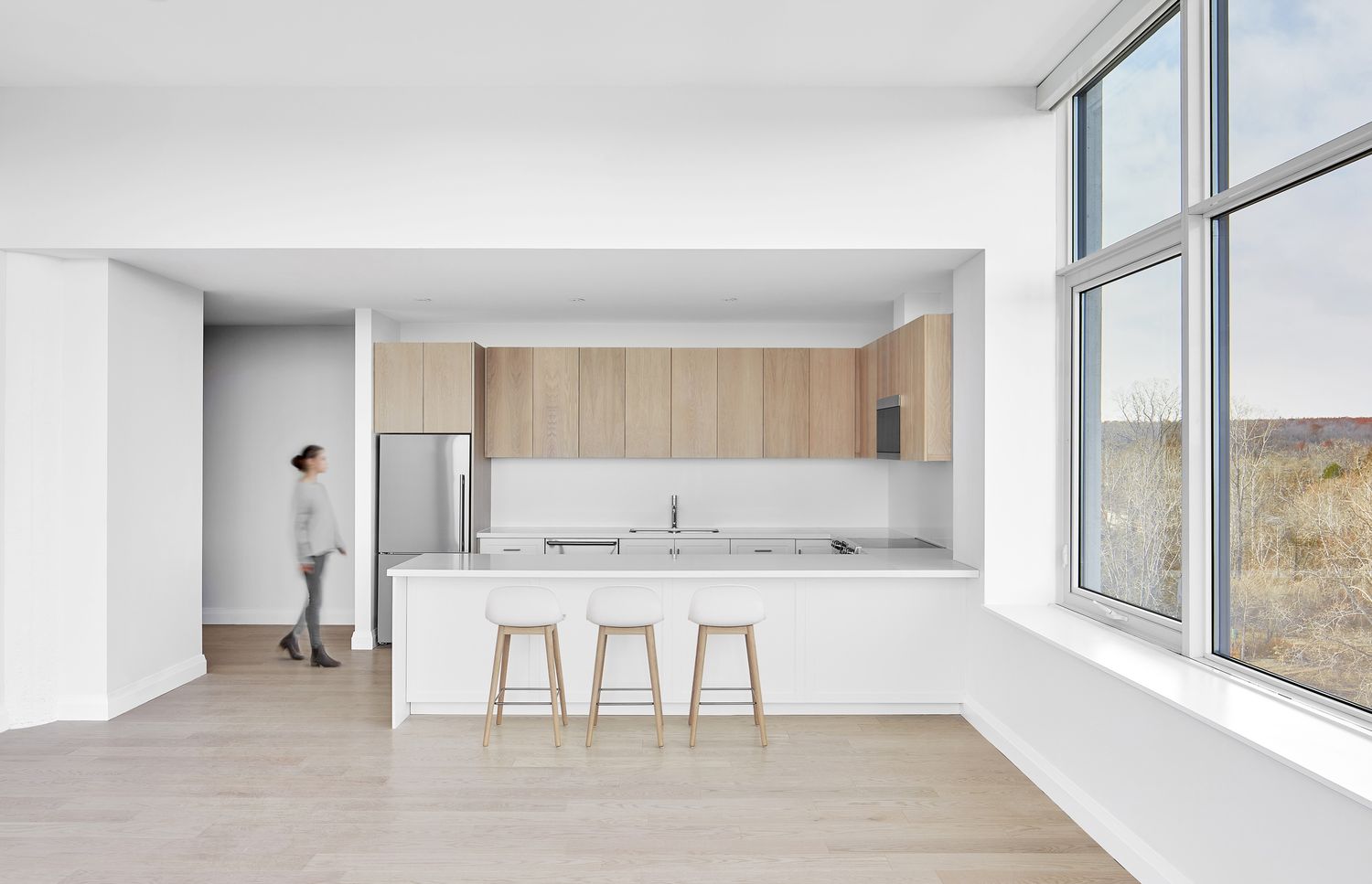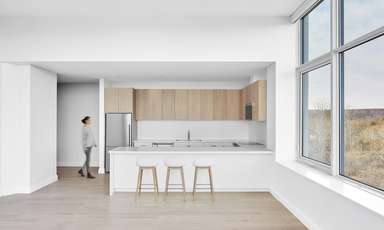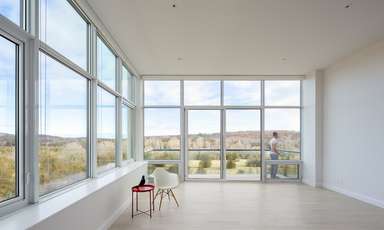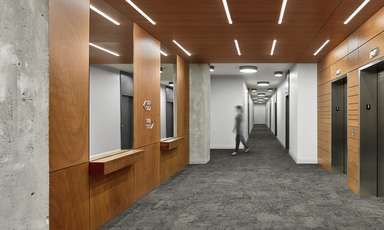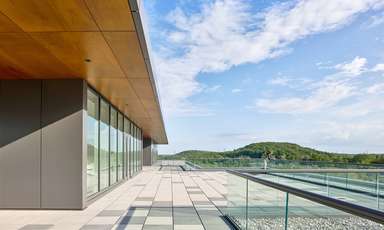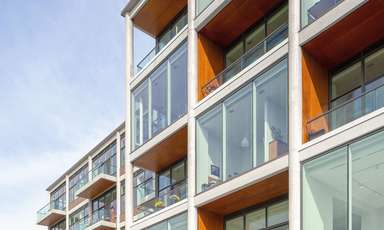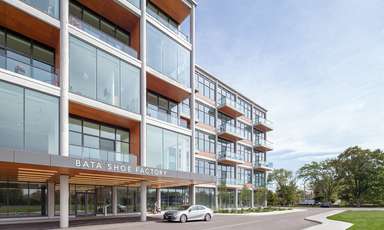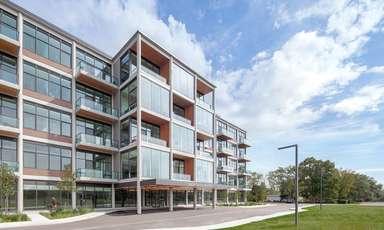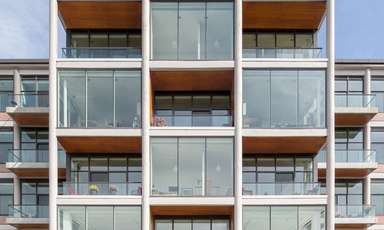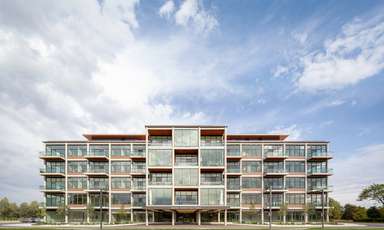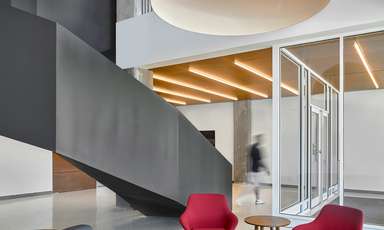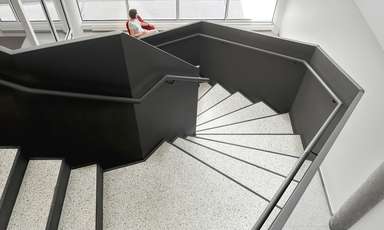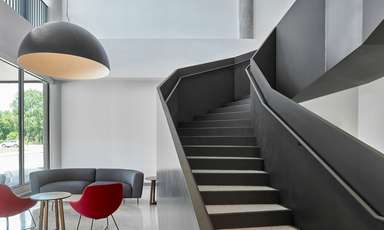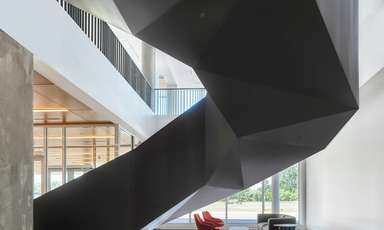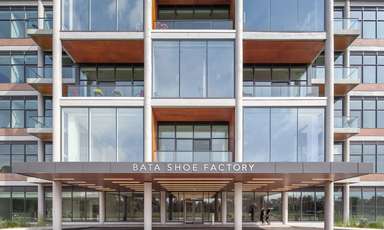The late Sonja Bata pursued her passion for architecture and the built environment through the revitalization of the town of Batawa, located 175 km east of Toronto on the Trent river. As a sustainable community and satellite town adapted to 21st century living, where residents could live close to nature but maintain a connection to work through high-speed broadband, she envisioned Batawa as a model community for social and environmental sustainability. Central to Bata’s vision for the town was the conversion of the manufacturing facility built by her family’s shoe empire, who relocated to Canada at the beginning of World War II. Located at the gateway to the town, the conversion of the former factory into a mixed-use residential, commercial and community building, designed by BDP Quadrangle (Architect of Record) and Dubbeldam Architecture + Design (Collaborating Design Architect), is an ambitious adaptive re-use project with a light environmental footprint and a strong social mandate.
In its heyday, the shoe factory employed close to 1,900 people and supported the entire community, which included two schools, two churches and sports facilities. It was the force that bound and oriented Batawa. That same philosophy was taken in the design vision for the revitalization of the old factory into a new and vital facility that serves the community – the building is now home to ground floor commercial spaces leasable to local businesses, a second floor intended for educational incubation, a daycare with an outdoor playground, and 47 high-quality rental residential units on the upper three storeys. The residential units are of varying sizes to provide both affordability and flexibility as families grow and contract, and to promote aging-in-place for residents who want to stay connected with the community. With the intent of creating a community hub, the building offers amenities open to both residents and the community-at-large, including an exhibition/community space and multi-purpose rooms for meetings and lectures on the second floor, and an accessible rooftop terrace with panoramic views to the local Batawa ski hills and the Trent River.
In alignment with Sonja Bata’s vision of the building as a model of sustainable architecture, the renovated factory retains the original 1939 concrete structure, saving close to 80% of the embodied carbon from the original building, while revitalizing its Modernist heritage through new materials and striking design elements. Tenants with a taste for authentic industrial modernist architecture will find much to appreciate here. The original building's waffle slab structure (an innovation that the Bata's brought with them from Europe) and its generous open spans allowed for its conversion into residential units with 12-foot-high ceilings and abundant natural light. The façade features new glazing and brick cladding that echo the factory’s original appearance, with the addition of cantilevered balconies throughout. The regular rhythm on the façade is interrupted by the projecting central volume, with recessed balconies that add playful voids to the otherwise planar façade; below this, an entrance canopy with dramatic LED lighting extends outward, welcoming residents & visitors to enter.
On the main level, new terrazzo flooring in the public spaces and on the stair treads speaks to the vintage of the building and ensures durability for a high-traffic area. The lobby features a double-height space with a faceted sculptural steel staircase that wraps around an exposed concrete column, highlighting it in place as a homage to the original factory structure. The geometric shape of the stair instills a sense of strength and permanence in a building that has been given a second life. An oversized light fixture floats over the lobby sitting area comprised of furniture from primarily local fabricators and suppliers.
Among the key priorities that Sonja Bata outlined for the project was the integration of sustainable energy systems. As a result, the building’s heating and cooling systems are powered entirely through a geothermal energy source comprised of 63 holes drilled to a depth of 600 feet under the parking area. Sustainable approaches work in conjunction with passive strategies including an airtight building envelope and operable windows. Any new materials were selected to be as sustainable as possible, with long lifespans, durability and eco-friendly characteristics, right down to the carpet tiles made from recycled fishing nets and low VOC finishes. Further to its adoption of environmentally sustainable strategies, the Bata Shoe Factory demonstrates its long-term commitment to fostering community by offering an affordable rental model rather than condominium units.
